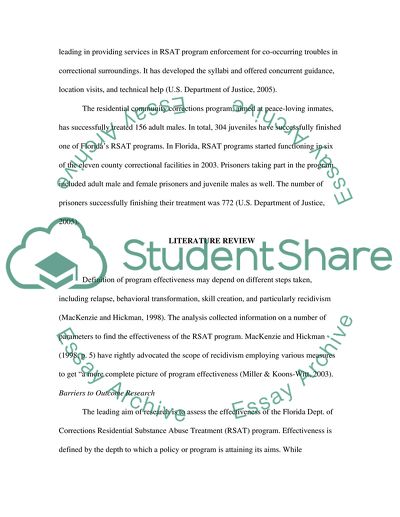Cite this document
(The Analysis of the Effectiveness of the Florida Deparment of Research Paper, n.d.)
The Analysis of the Effectiveness of the Florida Deparment of Research Paper. Retrieved from https://studentshare.org/social-science/1781541-a-proposal-the-analysis-of-the-effectiveness-of-the-florida-dept-of-corrections-residential-substance-abuse-treatment-rsat-of-the-state-prison-programs
The Analysis of the Effectiveness of the Florida Deparment of Research Paper. Retrieved from https://studentshare.org/social-science/1781541-a-proposal-the-analysis-of-the-effectiveness-of-the-florida-dept-of-corrections-residential-substance-abuse-treatment-rsat-of-the-state-prison-programs
(The Analysis of the Effectiveness of the Florida Deparment of Research Paper)
The Analysis of the Effectiveness of the Florida Deparment of Research Paper. https://studentshare.org/social-science/1781541-a-proposal-the-analysis-of-the-effectiveness-of-the-florida-dept-of-corrections-residential-substance-abuse-treatment-rsat-of-the-state-prison-programs.
The Analysis of the Effectiveness of the Florida Deparment of Research Paper. https://studentshare.org/social-science/1781541-a-proposal-the-analysis-of-the-effectiveness-of-the-florida-dept-of-corrections-residential-substance-abuse-treatment-rsat-of-the-state-prison-programs.
“The Analysis of the Effectiveness of the Florida Deparment of Research Paper”, n.d. https://studentshare.org/social-science/1781541-a-proposal-the-analysis-of-the-effectiveness-of-the-florida-dept-of-corrections-residential-substance-abuse-treatment-rsat-of-the-state-prison-programs.


